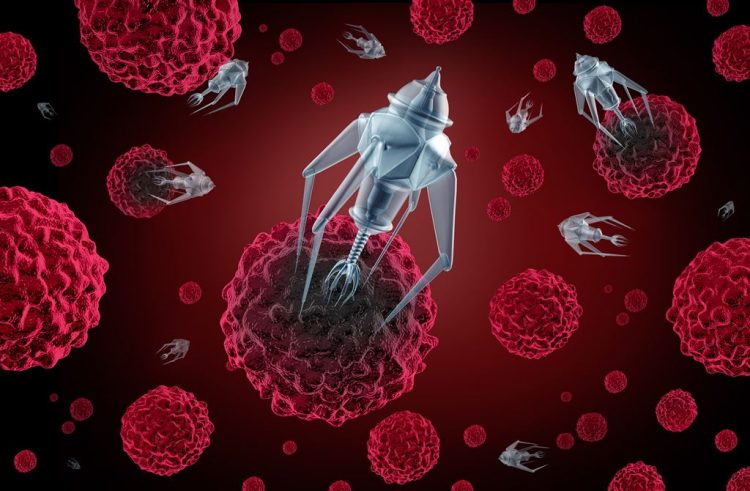Using DNA origami to build nanodevices of the future

Scientists have been studying ways to use synthetic DNA as a building block for smaller and faster devices. DNA has the advantage of being inherently “coded”. Each DNA strand is formed of one of four “codes” that can link to only one complementary code each, thus binding two DNA strands together.
Scientists are using this inherent coding to manipulate and “fold” DNA to form “origami nanostructures”: extremely small two- and three-dimensional shapes that can then be used as construction material to build nanodevices such as nanomotors for use in targeted drug delivery inside the body.
Despite progress that has been made in this field, assembling DNA origami units into larger structures remains challenging.
A team of scientists at Kyoto University’s Institute for Integrated Cell-Material Sciences (iCeMS) has developed an approach that could bring us one step closer to the nanomachines of the future.
They used a double layer of lipids (fats) containing both a positive and a negative charge. DNA origami structures were weakly absorbed onto the lipid layer through an electrostatic interaction. The weak bond between the origami structures and the lipid layer allowed them to move more freely than in other approaches developed by scientists, facilitating their interaction with one another to assemble and form larger structures.
“We anticipate that our approach will further expand the potential applications of DNA origami structures and their assemblies in the fields of nanotechnology, biophysics and synthetic biology,” says chemical biologist Professor Hiroshi Sugiyama from iCeMS.
The research was published in Nature Communications on 27 August 2015
For more information contact:
Ms. Tomoka Aiyama
Public Relations
Institute for Integrated Cell-Material Sciences (iCeMS)
Kyoto University
Phone: +81-(0)75-753-9755
Email: taiyama@icems.kyoto-u.ac.jp
Associated links
https://www.icems.kyoto-u.ac.jp/
Journal information
Nature Communications
Media Contact
More Information:
http://www.researchsea.comAll latest news from the category: Health and Medicine
This subject area encompasses research and studies in the field of human medicine.
Among the wide-ranging list of topics covered here are anesthesiology, anatomy, surgery, human genetics, hygiene and environmental medicine, internal medicine, neurology, pharmacology, physiology, urology and dental medicine.
Newest articles

Bringing bio-inspired robots to life
Nebraska researcher Eric Markvicka gets NSF CAREER Award to pursue manufacture of novel materials for soft robotics and stretchable electronics. Engineers are increasingly eager to develop robots that mimic the…

Bella moths use poison to attract mates
Scientists are closer to finding out how. Pyrrolizidine alkaloids are as bitter and toxic as they are hard to pronounce. They’re produced by several different types of plants and are…

AI tool creates ‘synthetic’ images of cells
…for enhanced microscopy analysis. Observing individual cells through microscopes can reveal a range of important cell biological phenomena that frequently play a role in human diseases, but the process of…





















